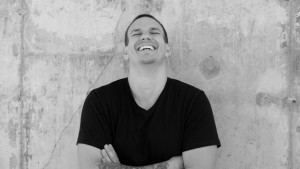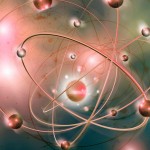Teaching More Than Mass
Quantum Science Made Easy-er
~ James Crader
I remember sitting in a Humanities Class, day one, and the professor writing the words “Homo Religioso” on the board and stating that’s what we are. Comparative Religion was my college minor. He went on to say that the term is often misinterpreted as “Religious Hominid” (meaning human leading a religious existence) and noted that what it really meant is that we’re human animals looking to make meaning, or spot relationships, within our existence. There have been a few quotes throughout my life that have both hit and stuck to me permanently, that being one. I am neither a physicist nor neuroscientist, although both subjects intrigue me. This article won’t be about particle theory, laws of gravity, or the great brain vs. mind debate, although all are relevant. Instead what I’m hoping happens within the next few paragraphs is for our communal mind to open, some data enter, and we end on the other side with a little more clarity around our intention regarding the relationship of student / teacher / body.
Let’s start with the easy stuff, Newtonian Physics. Basically it’s the stuff we all pretty much grew up “knowing” about our world. It’s the idea that if an apple falls from a tree it will always hit the ground, and stay there (until eaten). In Newtonian Physics things are predictable. Logic and mathematics explain existence, and by understanding basic processes we can infer outcomes from bigger processes. According to Newtonian Laws our world is made of matter, and forces act on matter, and there’s an innate compartmentalization to it all. Through Newtonian thought we can easily study finite pieces and how those pieces affect other pieces. Let’s go back to our apple. That apple is held off the ground by a branch that supports it. When that connection is lost, and the apple is free, forces act upon it, the most significant force being gravity. So, the apple falls to the ground where it is met by denser matter (Earth). It’s a predictable process we can all observe. Newtonian Laws are clean and orderly, and allow us to make sense of our environment, rather than be frazzled by it. If I do this I expect this to happen.
Easy right!?! (Insert eye roll – and I promise we’re going somewhere with this.) Now the fun begins, Quantum Physics. Not only is our known Universe governed by Newtonian Physics, but also Quantum. According to Quantum Physics everything is energy wave-lengths; literally floaty infinite intangible energy. Scientific testing has demonstrated that electrons orbiting around an atomic nucleus can simultaneously be observed as both particle (matter) or energy wave-lengths. The interesting thing is that those electrons are found to be either particle or wave-length determinate by what the observer expected to find. Meaning that if the scientist thought she’d find a particle it was a particle, and vice versa. (Like an actual switch-o-change-o black/white at the same time deal.) So, according to Quantum Thinking existence is determined by subjective observation. At an atomic level everything is existing in the form of pure potential or possibility, and what we expect to find is probably what we’ll find, and the observation of it collapses all of the potential possibilities of what might be found into the reality of what is observed. (Weighty!! And What??) To clarify, although any situation may give us infinite outcomes, if I expect to find outcome A, the probability of finding any other outcome other than A is highly unlikely but possible, until I observe outcome A and say, “See, told you’d I’d find A.” Which always leaves me wondering did we all just communally decide to “invent” Newtonian Physics to have a way to interact with one another, like Quantum Beings engaging in a Newtonian Experience, but that’s a woo-woo question for another time.
Let’s make this all mean something for us. We work with the body, right? Every day bodies walk in, lie on our Reformers, and push in and out. That’s Newtonian Physics. I expect that on Monday when my client, Kay, comes in and does Footwork that the machine will move in a predictable fashion, and this or that muscle will activate / relax / or just be plain ol’ absent. What about when I give Kay a new exercise? Or new task within an exercise? She hasn’t physically been there before and there may be no in-grained process within her body as to how to do said movement. What about when Kay says, “I CAN’T do that!” I believe her. I believe she will be less successful, or not at all, because she’s already begun to narrow her possibilities into failing probabilities simply because that’s the outcome she’s expecting, and we’ll likely observe. It’s not just a glass is half empty outlook, but according to the quantum laws of diminishing probabilities, it’s purely science. If I limit myself by thought I’ve literally just limited the potential for success.
 The more I teach the more I aim to help my students optimize self-integration in an effort to up-regulate self-organization. (Huh?) I teach movement, but less important to me are questions and cues like, “Use only this muscle,” and “Can you scoop more?” Those questions and requests often seem to compartmentalize the body and exaggerate a student’s tendency to self-limit. It’s as if they create a scarcity rather than over-abundance of movement potential to draw upon. If you can’t feel or use the one thing I’ve requested there is certainly a tendency to bring yourself into an “I can’t” mindset. So instead, I’m interested in knowing what you notice as you move through an exercise, and co-observing your specific ways of passing through those movements while cueing you to discover new and creative ways to explore possibilities for unique movement and routinely challenging old processes (movement strategies). I’m interested in relationships and potential. Through that process we can problem solve how to integrate the things you’ve come to expect from your body while working toward infinite new possibilities, and in turn support you to organize your body and mind. It is my understanding that science is showing us well-being is not a state, but rather the action of thoughtful self-organization and appreciation of rich relationships both inside and outside ourselves; something that the Western Medical Model (including compartmentalization of bones and muscle) and Newtonian Thought are both a little lagging in. As an alternative wouldn’t it be radical if our roles as movement instructors shifted from mass-moving trainers, to perception-altering potential-inspiring coaches? Man, what kind of changes might we see then … in bodies … in communities at large? My challenge to you is how will you be of better service to your clients, your self, and your community by anticipating less and observing, appreciating, and supporting more while never accepting “I CAN’T” as an answer?
The more I teach the more I aim to help my students optimize self-integration in an effort to up-regulate self-organization. (Huh?) I teach movement, but less important to me are questions and cues like, “Use only this muscle,” and “Can you scoop more?” Those questions and requests often seem to compartmentalize the body and exaggerate a student’s tendency to self-limit. It’s as if they create a scarcity rather than over-abundance of movement potential to draw upon. If you can’t feel or use the one thing I’ve requested there is certainly a tendency to bring yourself into an “I can’t” mindset. So instead, I’m interested in knowing what you notice as you move through an exercise, and co-observing your specific ways of passing through those movements while cueing you to discover new and creative ways to explore possibilities for unique movement and routinely challenging old processes (movement strategies). I’m interested in relationships and potential. Through that process we can problem solve how to integrate the things you’ve come to expect from your body while working toward infinite new possibilities, and in turn support you to organize your body and mind. It is my understanding that science is showing us well-being is not a state, but rather the action of thoughtful self-organization and appreciation of rich relationships both inside and outside ourselves; something that the Western Medical Model (including compartmentalization of bones and muscle) and Newtonian Thought are both a little lagging in. As an alternative wouldn’t it be radical if our roles as movement instructors shifted from mass-moving trainers, to perception-altering potential-inspiring coaches? Man, what kind of changes might we see then … in bodies … in communities at large? My challenge to you is how will you be of better service to your clients, your self, and your community by anticipating less and observing, appreciating, and supporting more while never accepting “I CAN’T” as an answer?
Please join James on his blog “project_ Movement University” (www.evolvedbodystudio.com/projectmoveu/) for upcoming posts concerning further ideas on this subject, and the subject of movement at large. You can also find project_Move.U. on Instagram and FaceBook.
References and Further Explorations:
www.nature.com/news/quantum-physics-what-is-really-real-1.17585
www.ncbi.nlm.nih.gov/pmc/articles/PMC1569494/
 James Crader is a Movement Practitioner specializing in Pilates and John F. Barnes Myofascial Release Therapy, a CoreAlign Faculty Member, and owner of Evolved Body in Sacramento, CA. His work with athletes was recently featured in Mark Pedri’s Pilates documentary A Movement of Movement. Originally trained through Balanced Body, James has since gone on to study with numerous instructors both Contemporary and Classical including a mentorship program with Pilates Elder, Lolita San Miguel. James feels privileged to have been asked to teach workshops nationally, and internationally in Joseph Pilates hometown of Monchengladbach. His passion is to assist people in exploring how their bodies can move and feel better, from a re-conditioning environment to athletic performance training. Catch his website here.
James Crader is a Movement Practitioner specializing in Pilates and John F. Barnes Myofascial Release Therapy, a CoreAlign Faculty Member, and owner of Evolved Body in Sacramento, CA. His work with athletes was recently featured in Mark Pedri’s Pilates documentary A Movement of Movement. Originally trained through Balanced Body, James has since gone on to study with numerous instructors both Contemporary and Classical including a mentorship program with Pilates Elder, Lolita San Miguel. James feels privileged to have been asked to teach workshops nationally, and internationally in Joseph Pilates hometown of Monchengladbach. His passion is to assist people in exploring how their bodies can move and feel better, from a re-conditioning environment to athletic performance training. Catch his website here.


